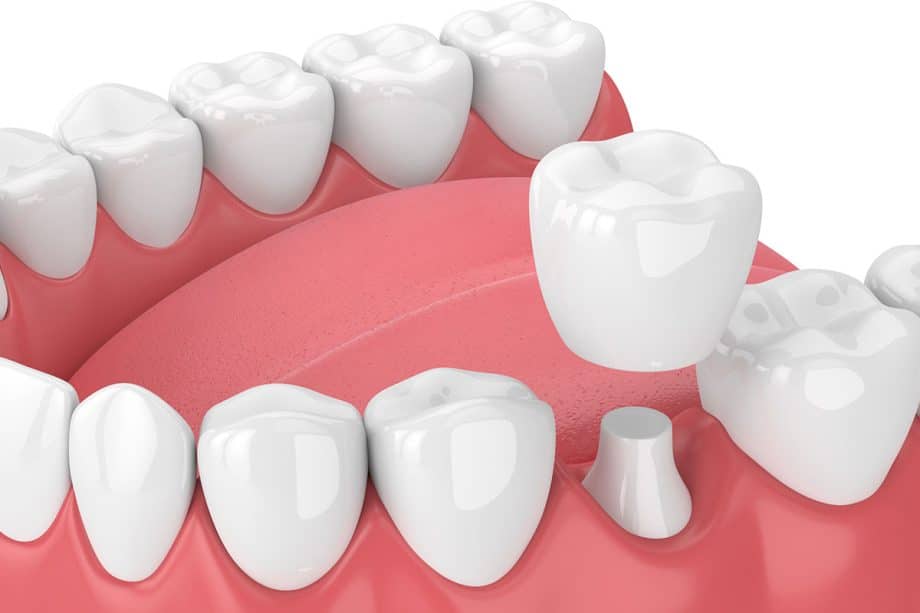If you've ever heard your dentist mention a dental crown, you might wonder, "What exactly are they made of, and why are they so important?" Dental crowns are an essential tool in restorative dentistry, providing both protection and aesthetics for damaged or weakened teeth. They act as a cap placed over a tooth, restoring its size, shape, strength, and appearance. Whether you've chipped a tooth, have a severe cavity, or recently undergone a root canal, dental crowns ensure your smile stays functional and beautiful.
But not all crowns are created equal. Dental crowns are crafted from various materials, each with unique benefits and uses. Before you commit to one, it's essential to understand what options are available and which best suit your specific needs.
Common Materials Used for Dental Crowns
When it comes to dental crowns, there's no one-size-fits-all solution. The best material for you depends on durability, aesthetics, and functionality within your mouth. Here are the most commonly used materials for dental crowns and their unique advantages:
1. Ceramic Crowns
Ceramic crowns are among the most popular dental restorations due to their natural appearance. Because they can be color-matched to natural teeth, they blend seamlessly into a smile, making them an excellent choice for front teeth.
- Durability: While not as strong as metal crowns, ceramic crowns offer sufficient durability for low-pressure areas.
- Aesthetics: Provides a natural-looking finish that closely mimics the translucency of natural teeth.
- Best Use: Ideal for visible teeth where appearance matters most.
2. Porcelain-Fused-to-Metal (PFM) Crowns
PFM crowns combine the strength of metal with the aesthetic benefits of porcelain, making them versatile and widely used.
- Strength: The metal base enhances structural integrity, making it suitable for higher-pressure areas like molars.
- Appearance: The porcelain exterior resembles natural teeth, but a dark line near the gum may appear over time as the metal base is exposed.
- Best Use: A balanced option for functional and aesthetic needs in both front and back teeth.
3. Gold Crowns
While gold crowns are less common today, they have a legacy of being incredibly strong and long-lasting restorations.
- Durability: Gold is highly resistant to cracking or chipping, even with heavy biting or grinding.
- Biocompatibility: Gold crowns have minimal reactions and are gentle on surrounding teeth.
- Best Use: It is perfect for less visible teeth (molars), especially where functionality and strength are key priorities.
4. Zirconia Crowns
Zirconia crowns are a newer innovation in dental restorations, offering unbeatable durability combined with improved aesthetics.
- Durability: Highly resistant to wear and fracture.
- Aesthetics: While zirconia crowns are not as natural-looking as ceramic ones, advancements in layering techniques have made them more visually appealing.
- Best Use: Excellent for back teeth and for patients seeking durability without compromising too much on appearance.
Factors Influencing the Choice of Dental Crown Material
Several factors help determine which dental crown material is right for you. These considerations ensure that the crown provides both the function and appearance you need.
- Cost: Gold crowns are expensive, while ceramic and porcelain options are usually in the mid-range.
- Location in the Mouth: Due to high chewing pressure, back teeth may require more durable materials like metal or zirconia. However, visible front teeth benefit more from ceramic's seamless appearance.
- Patient Preference: Some patients prioritize aesthetics, while others prefer a material that will last longer or is more affordable.
Your dentist will guide you through these considerations to make a well-informed choice that balances your needs and budget.
The Dental Crown Process
Getting a dental crown involves more than just selecting the material—it’s a multi-step process that ensures the crown fits comfortably and functions perfectly. Here's what you can expect:
- Consultation
During your initial appointment, your dentist will examine your tooth and discuss the best crown options based on its condition and location.
- Preparation
The tooth is prepared by reshaping it to accommodate the crown. If the tooth has significant damage, a filling may be used to strengthen the tooth structure beforehand.
- Impressions
An impression or digital scan of the tooth is made, which guides the fabrication of your custom crown.
- Temporary Crown
While your permanent crown is being made, you’ll receive a temporary crown to protect your tooth. On the occasion you have a Cerec crown made, you will skip this step and receive your final crown the day of the preparation.
- Crown Placement
At the final appointment, your dentist will fit and bond the permanent crown in place, ensuring proper alignment and a comfortable bite.
Why Dental Crowns Matter
Dental crowns serve an essential role in restorative and cosmetic dentistry. Here’s how they benefit oral health and your smile’s appearance:
- Tooth Protection: Crowns shield weakened or damaged teeth, preventing further issues like fractures or decay.
- Improved Appearance: From repairing chipped teeth to hiding discoloration, crowns can enhance your natural smile.
- Restored Functionality: A crown allows you to bite, chew, and speak confidently without discomfort or limitations.
When it comes to advanced restorative options, dental crowns serve as one of the most versatile and practical solutions.
Frequently Asked Questions About Dental Crowns
What is the average lifespan of a dental crown?
Dental crowns typically last between 5 to 15 years, depending on the material and how well you care for them. To prolong their lifespan, maintain proper oral hygiene, avoid chewing hard objects (like ice or pens), and schedule regular dental checkups.
Are dental crowns painful to get?
The procedure itself is not painful, as dentists use local anesthesia to numb the area. While you might experience minor sensitivity or discomfort after the procedure, it subsides quickly and can be managed with over-the-counter pain relievers if necessary.
At Oak Road Dentistry, we prioritize your comfort and oral health. Located in Snellville, GA, Oak Road Dentistry offers personalized care for all restorative and cosmetic dental needs, including expert crown placement.

